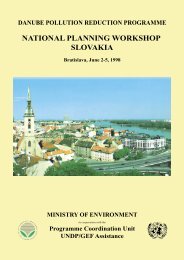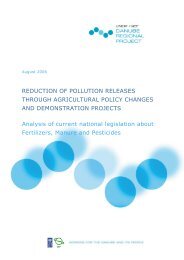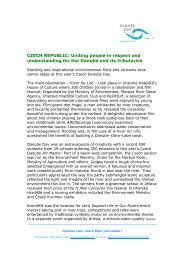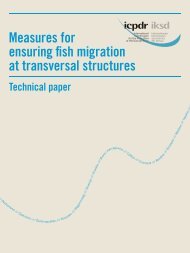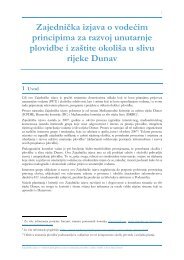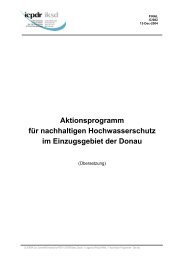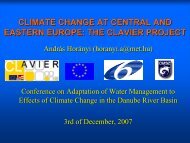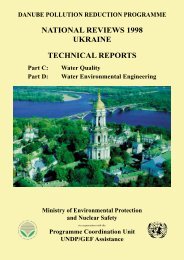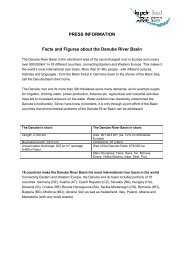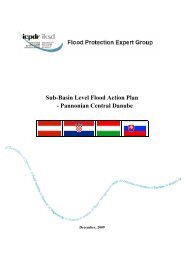Create successful ePaper yourself
Turn your PDF publications into a flip-book with our unique Google optimized e-Paper software.
Relying on the Danube:<br />
sustenance, energy and livelihoods<br />
The economic value of the Danube River is immense; it is a vital resource for water supply,<br />
sustaining biodiversity, agriculture, industry, fishing, recreation, tourism, power generation<br />
and navigation. A large number of dams, reservoirs, dykes, navigation locks and other<br />
hydraulic structures have been built in the Basin to facilitate many of these important<br />
water uses.<br />
Historically, the Danube and some of its main tributaries, such as the Sava, have formed<br />
important trade routes across Europe for centuries. Historically, the channelization<br />
of the river’s course has made it easier for ships to navigate 2,411 km, or 87%, of the length<br />
of the Danube. As “Corridor VII” of the European Union, the Danube connects the<br />
Black Sea with the industrial centres of Western Europe and with the Port of Rotterdam.<br />
Recent years saw an increasing awareness for the need to balance economic and environmental<br />
need in navigation management with special attention to the natural characteristics<br />
of the river. This was reflected in the “Joint Statement on Inland Navigation”, issued by<br />
the <strong>ICPDR</strong>, Danube Commission and Sava Commission. A similar consultation process is<br />
maintained between the <strong>ICPDR</strong> and representatives from the hydropower sector.<br />
16



